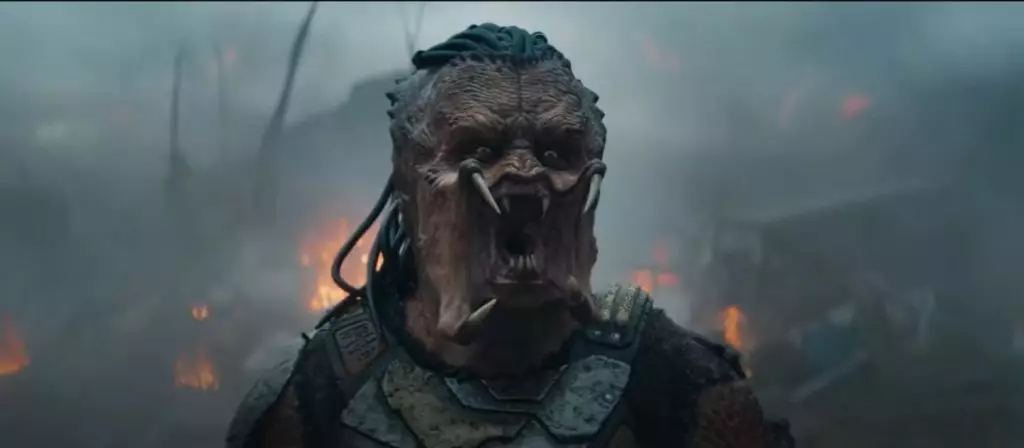In a landscape dominated by Marvel’s predictable spectacle and superhero overload, the absence of Marvel at this year’s Comic-Con might seem like a missed opportunity, but it also paves the way for refreshing innovation within the film industry. Disney’s decision to spotlight lesser-known franchises like 20th Century Studios’ *Predator: Badlands* and *Tron: Ares* signals a willingness to diversify storytelling and challenge genre conventions. While mainstream Hollywood often prioritizes expansive universes and CGI-laden visions, *Predator: Badlands* introduces a more nuanced narrative that aims to rekindle the franchise’s potential for emotional depth and complex characters. It’s a bold move away from the superficial grandeur, urging filmmakers to focus on meaningful stories that resonate beyond mere spectacle.
Breaking the Mold: The Predator as a Protagonist
What truly sets *Predator: Badlands* apart is its daring pivot—taking a franchise known for its relentless kill count and creature features and positioning a Predator as a protagonist. This shift not only challenges audience expectations but also serves as a commentary on empathy and understanding across different species and cultures. The film’s emphasis on a young, outcast Predator on a quest for self-discovery underscores a significant departure from the traditional “monster” trope—moving toward a narrative that humanizes (or perhaps ‘Predator-izes’) its antagonist.
Such a narrative choice exemplifies a progressive approach in genre filmmaking, emphasizing character development over nihilistic violence. This choice invites viewers to reevaluate what makes a hero or villain and fosters empathy for characters who, historically, have been vilified. It’s a step toward a more inclusive storytelling paradigm, where diversity of perspective and emotional complexity are prioritized over shallow thrills.
Reimagining the Franchise’s Legacy
The franchise’s origins date back to 1987, a product of Cold War paranoia and muscular action heroes like Arnold Schwarzenegger. Yet, the latest iterations and spin-offs tend to prioritize surface-level violence over substance, often neglecting the rich potential for storytelling within this universe. The creative team behind *Badlands*, led by director Dan Trachtenberg, presents an opportunity to rejuvenate the franchise with thoughtful world-building and character-driven plots.
The film’s setting on the Death Planet, with characters like outcast Dek and battered android Thia, introduces an intriguing exploration of alien culture, familial bonds, and survival instincts. Instead of relying solely on CGI monsters and explosive sequences, *Badlands* promises an emotionally charged adventure that emphasizes relationships and personal growth. In doing so, it addresses a glaring gap—making the alien figures relatable, even if they look nothing like us.
This approach aligns with the current shift in Hollywood—toward more diverse, complex narratives that challenge audiences rather than condescend to them. It signals a move away from blockbuster clichés and toward a future where blockbuster films can also be intelligent, emotionally satisfying, and socially aware.
Challenging Industry Norms and Audience Expectations
The decision to release *Predator: Badlands* exclusively in theaters is also noteworthy. Streaming has revolutionized how we consume content, often sacrificing depth for immediacy. However, this film’s theatrical release suggests confidence that audiences crave meaningful experiences beyond the comfort of their homes. It’s a recognition that cinema can still be a space for innovative storytelling that warrants a communal viewing experience.
Furthermore, the involvement of a talented director like Trachtenberg—whose previous work *Prey* received widespread acclaim—indicates a reinvigoration of the franchise rooted in respect for genre craft. By blending practical effects with character-driven storytelling, *Badlands* attempts to challenge the assumption that blockbuster films must rely solely on visual effects to succeed.
This pivot toward quality over quantity could inspire Hollywood to rethink its blockbuster strategies, emphasizing artistry, diversity, and emotional resonance. Such films might not generate the same immediate financial returns as formulaic blockbusters, but they foster a more genuine connection with viewers and elevate the medium.
The upcoming *Predator: Badlands* exemplifies a necessary evolution within Hollywood—embracing stories that are emotionally complex, culturally diverse, and creatively daring. It signals a shift away from superficial spectacle toward a more meaningful exploration of alien worlds and moral ambiguity. While the industry remains fixated on franchise longevity and commercial dominance, films like this challenge the status quo, advocating for a future where blockbuster cinema is as thoughtful as it is thrilling. This is not merely about revitalizing an old franchise; it’s about redefining what blockbuster filmmaking can achieve in today’s cultural landscape.



Leave a Reply